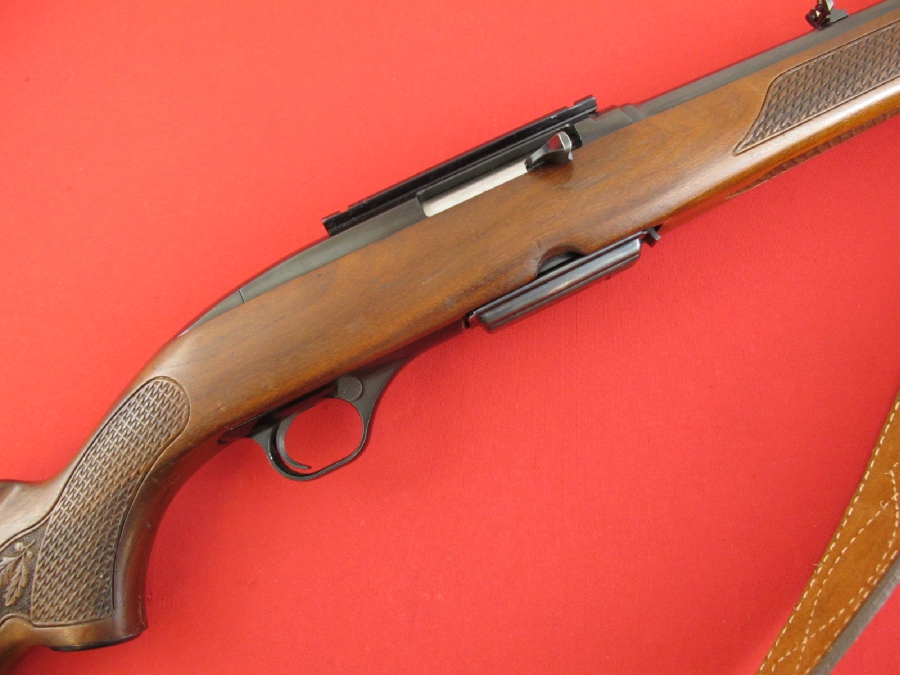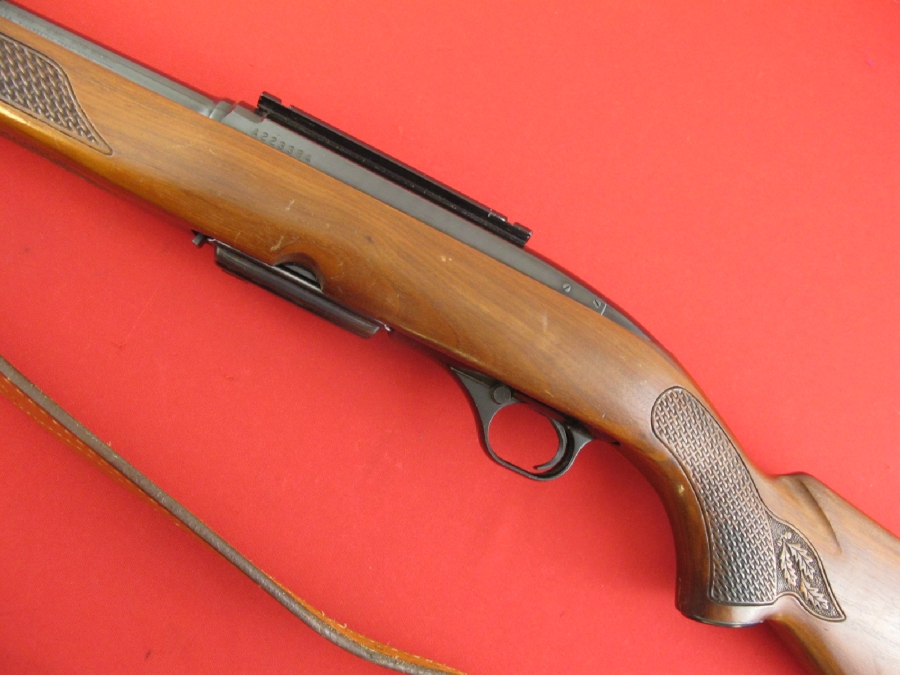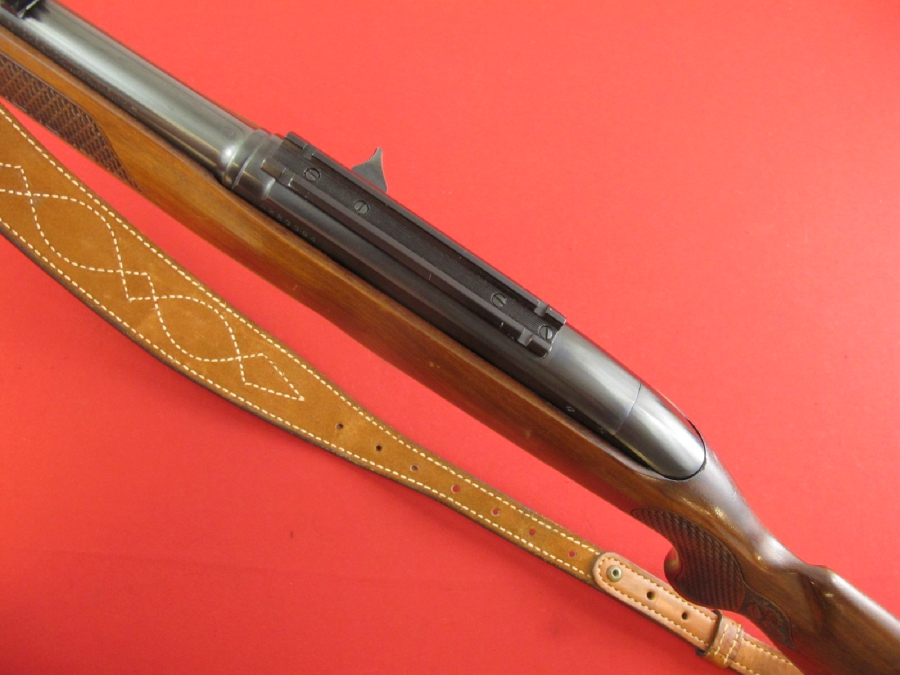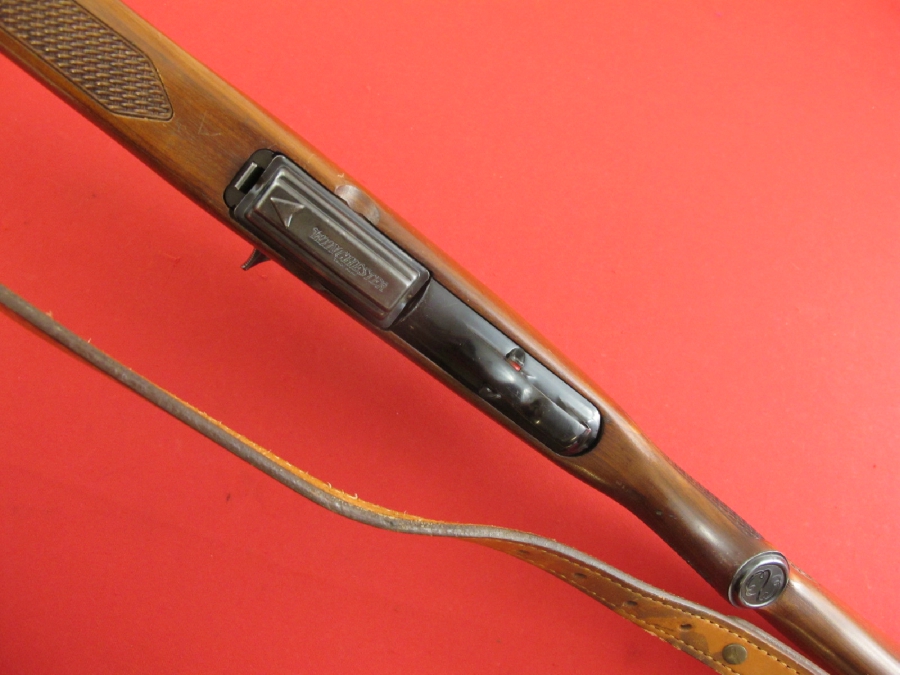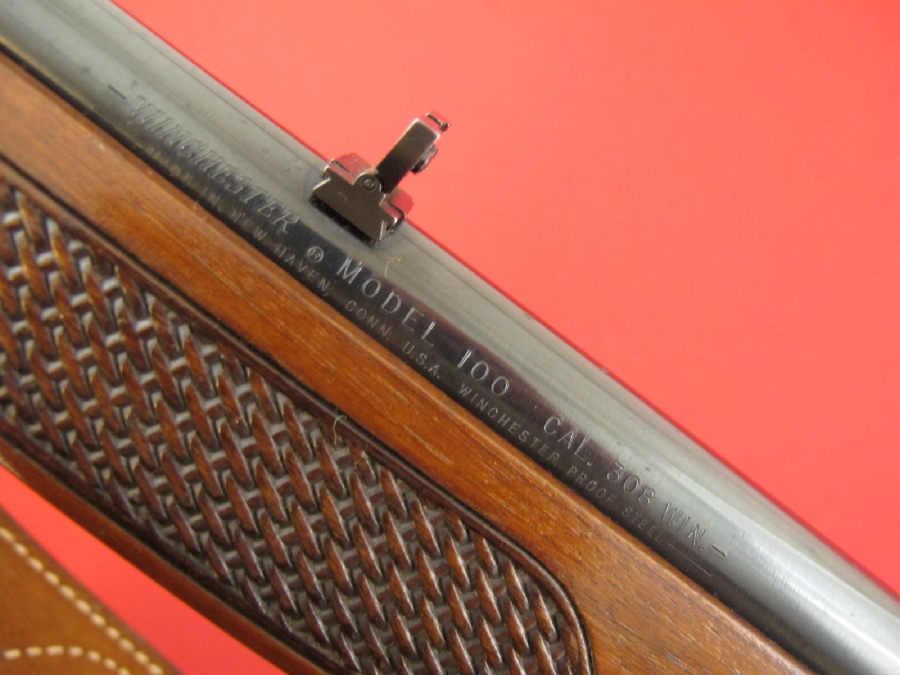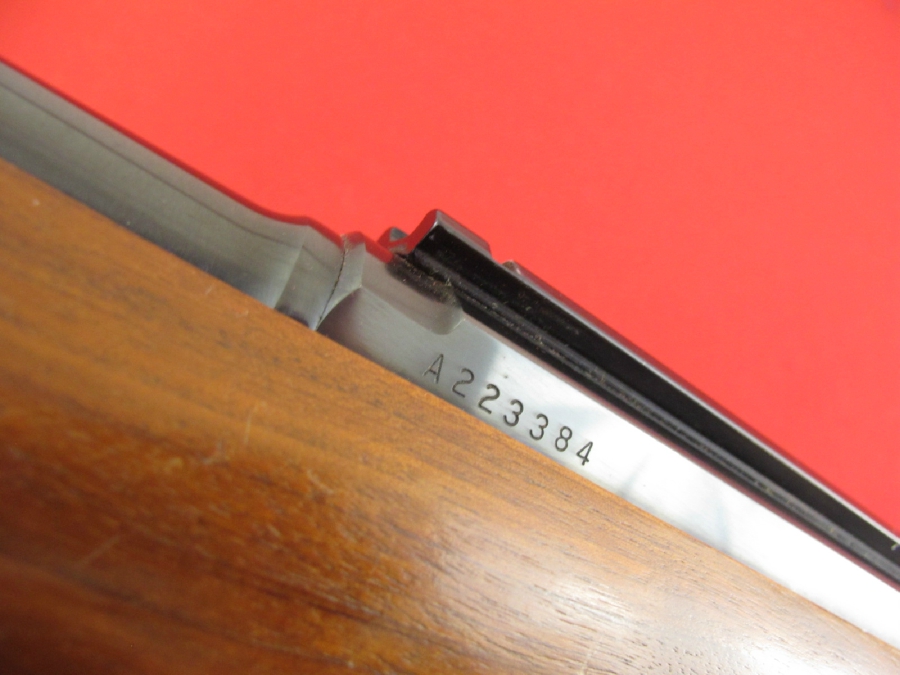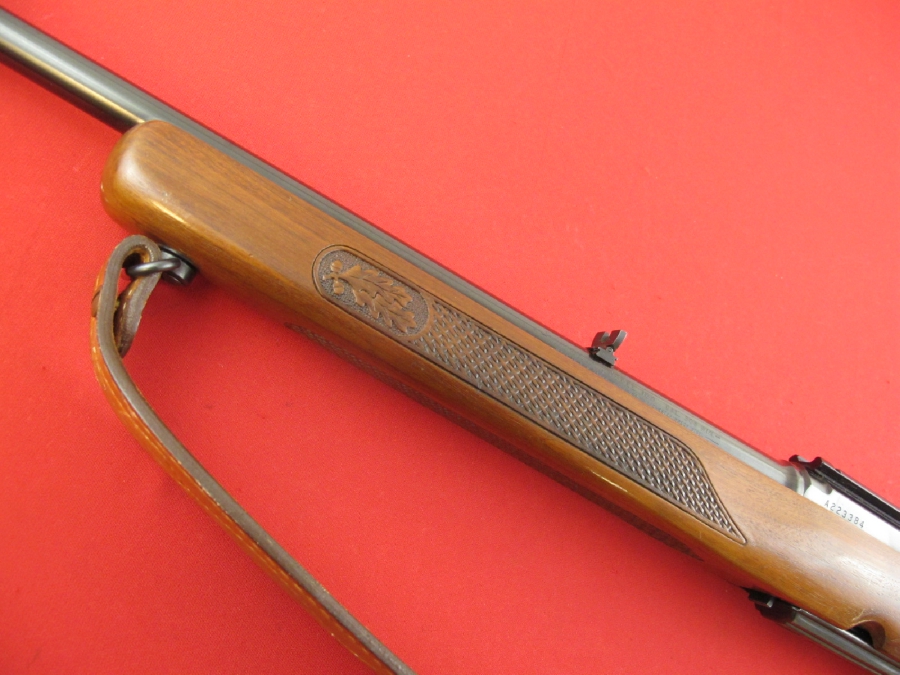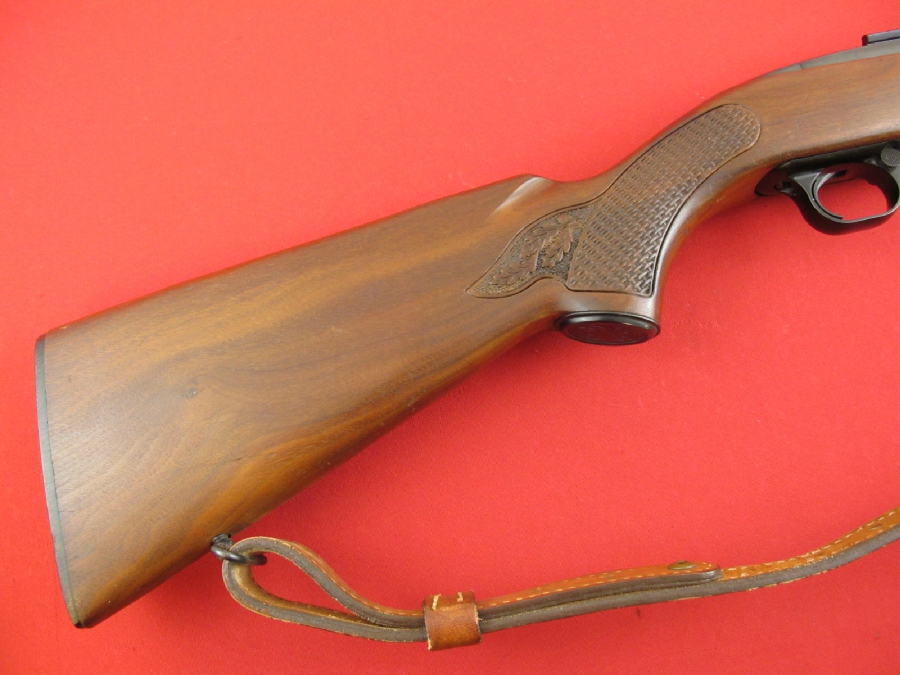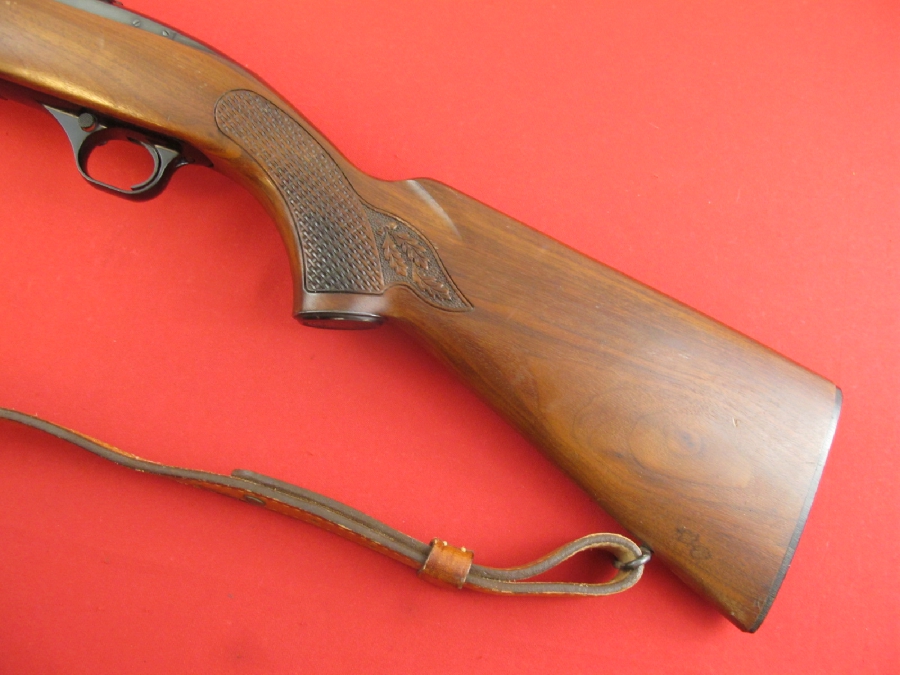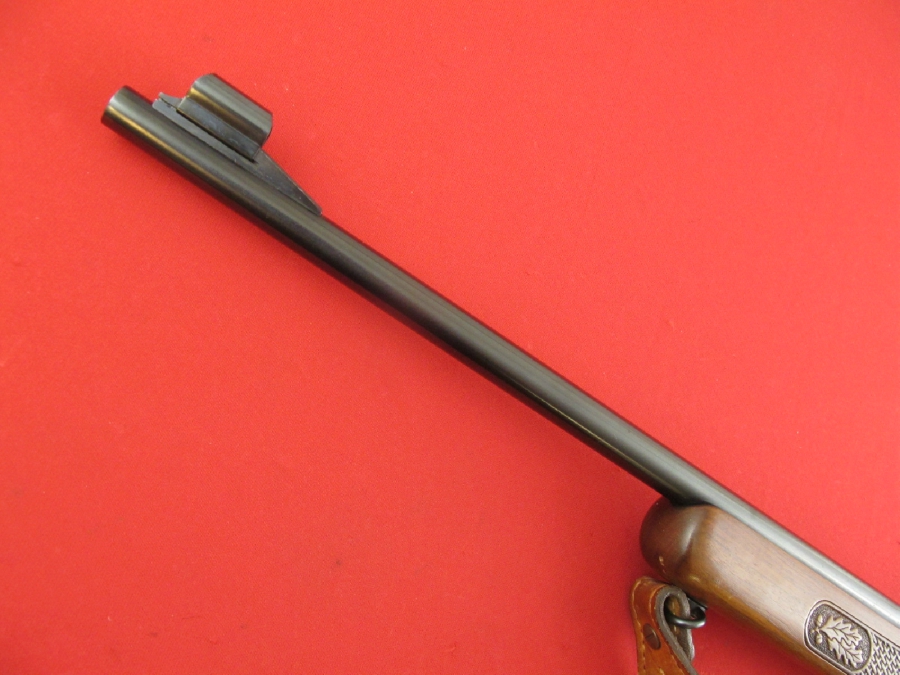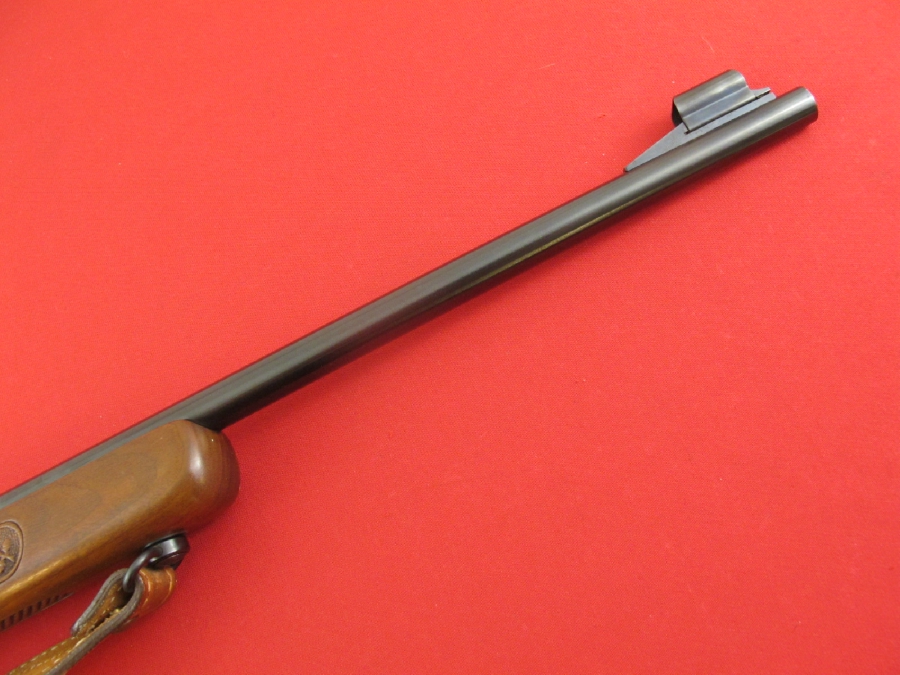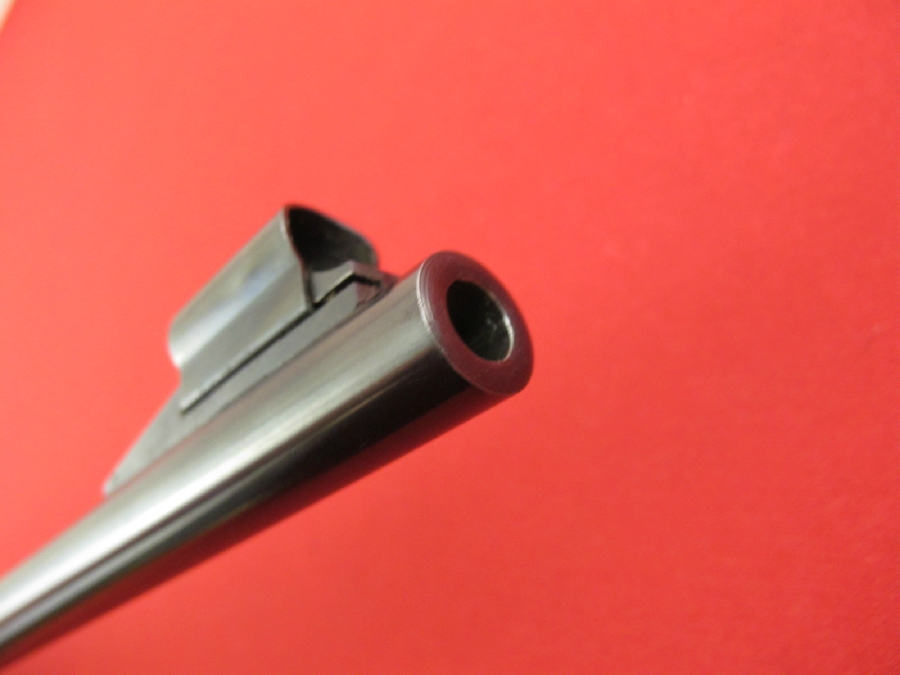Typical US Army propaganda! Also what in the Hell is with the crappy computer voice too! But let us move on.
For example -Like the Army is really going let some Trooper (E-1 thru E-4) sound off about this gun. Even if its the best handgun ever made. You will be told in no uncertain terms on what to say about it.
Because nobody in their right mind, Is going to play the game of “Telling the Truth to Power” in the US or any other Army out there for that matter.
Especially when some of the really scary Folks in charge of you are involved.
For example. I had a Squadron Command Sgt Major. Who had gone to the Vietnam War several times. But was finally told that he could not go again. Because he was “enjoying” it too much!
Another time I looked at his fruit salad, when he wasn’t looking.
It was the first time I had ever seen somebody with a Combat Infantry badge, D.S.C., Silver Star, Bronze Star with V for valor, a Purple Heart with a mess of palms & stars and a bunch of Foreign Decorations that I couldn’t ID. Even the Squadron Commander was slightly scared of him.
Bottom line – Folks you will have to trust me on this one. As I have met & worked with some really tough & scary Folks while I was in the Army.
But if you really want to find out about anything in the Army. Then go to the Officers Club at the end of of a hard day. Or the NCO Club and stand for a couple of rounds. Then you will get the truth about any almost any subject.
Month: October 2018
But what if we told you there was a gun marketed for almost a century that was more advanced than the 97, better made than the 1200, and sold many times as much as the 21. Well it happened, and it was the M12.
Why the need?
In the late 1890s, John Browning had perfected a pump action shotgun for Winchester, the Model 1897 that proved to be one of the best scattergun designs in history. It was a pump-action gun with a under barrel tubular magazine, but as the years ticked by, there was one glaring, antiquated flaw—it had a hammer.
Between 1904-1908 both Savage and Remington came out with ‘hammerless’ designs that replicated Winchester’s gun performance, only with the hammer hidden inside a streamlined receiver. Winchester found itself rapidly losing market share to the more modern designs.
Winchester engineer Thomas Crosley Johnson, a man credited with more than 120 patents and much of the groundwork that led to the legendary Model 70 rifle, was tasked to come up with this new hammerless model.
Design
Johnson’s concept took a solid block of steel and milled it out to accommodate the receiver. The six-shot tubular magazine fed through the bottom opening and into the chamber. Ejected hulls kicked out of the side port to the right of the gun. Hand-fitted machined steel internal parts, black walnut stocks and cross bolt safety all helped give the firearm a leg up on the competition. It was billed as “the perfect repeater.”

The Model 12 served trench gun duties with military units for decades. Note the addition of a heat shield.
The original gun marketed in 1912 was a 20-gauge 2.5-inch chamber shotgun with a 25-inch barrel. In 1914, both 12 and 16 gauge chamberings were offered. After 1927 the guns were stretched to shoot 2 3/4 inch shells and later for 3-inch magnums. By the height of their growth in the 1930s, the guns were sold in 12, 16, 20, and 28-gauge with a multitude of barrels lengths and grades. All of the guns made before 1964 were milled and machined from solid steel to a glorious slickness.
Use

Model 12 seen here in the hands of a Marine in the Pacific during WWII. This gun continues to find it’s way on to battlefields.
Winchester pushed the guns out to its salesmen and to good effect, becoming one of the most popular shotguns of its day. Selling it first as the Model 1912, after WWI they simply marketed it as the Model 12. While the Model 97 ‘hammer-gun’ was still in production as late as 1957, the hammerless M12 outsold it by more than 2:1.
The gun was fast, which made it one of the most popular on the market. The lack of a trigger disconnector (who would want one of those anyway) meant that the gun could fire as fast as you could pump the action—which proved pretty fast indeed. Herb Parsons, a well-known exhibition shooter, would often break seven clays thrown into the air with one of these shotguns, firing one round per clay. Herb was so fast a shot that he was even called to serve his country in World War 2 as a gunnery instructor, teaching young men the basics of shooting down aircraft with Winchester 12s among other guns.
Speaking of Winnie 12s in the military, while the Winchester 1897 was the better-known trench gun of its day; many Model 12s were bought to help fill the ranks. The Army and Marines brought these
guns to World War One (700) World War 2 (over 68,000) and Vietnam. They served as riot guns with military police, trench guns in the front lines, and in support duties. While officially replaced by newer Remington 870s and Mossberg 500s, since then these old vets still continue to get spotted in pictures of US soldiers in harm’s way as late as the recent conflicts in Iraq.
Winchester closed the line on these guns in 1964, but small batches were released occasionally since then as late as 2006. In all some 2-million of these guns were produced. The very similar but cheaper designed Winchester Model 1200/1300 was introduced in 1964 as a low-cost aluminum receiver replacement for the venerable Model 12. Riddled with stamped parts rather than milled, hand-fitted ones, it was not ‘the perfect repeater.’
Collectability
There are so many of these classic old shotguns out there floating around in obscurity that now could be the best time to go searching for one at a good price. Relatively new shotguns are out there as good economical shooters while older pieces are solid investments. Winchester themselves maintains a serial number/production date range list that can help with appraising. Pre-1966 made guns will be all numeric serial numbers (e.g. 1962001) while those made after 1972, the so-called ‘New Style Model 12’ with stamped parts, will begin with a letter prefix (e.g. (Y2026399).
Nice pre-1964 collectable guns usually start at about $600 and move up from there with a premium being given for heavy barrel guns, guns with factory engravings, and early 3-inch magnum duck getters. Remember, 28-gauge guns will be the rarest of all and guns made before 1927 will have 2.5-inch chambers so be careful about shooting these old birds until you check them out.

If you find a Winchester 12 with these marks, we suggest you get it checked out by a trusted appraiser.
Former military shotguns run crazy expensive in the past decade. These guns will have small Ordnance “Shell and Flame” insignia stamped on the top of the barrel just in front of the receiver while both “U.S.” and the “Shell and Flame” insignia are roll stamped on the right side of the receiver below the ejection port. On some models there are others. Very nicely preserved and properly authenticated Model 12s with the correct markings can often run several thousand dollars to the right buyers.
Since the gun was in production by Winchester as late as 2006, there is no concern anytime soon that the millions of these vintage scatterguns will be unsupportable anytime soon. Winnie 12 parts are widely available from Sarco, Numrich and others. This puts bargain shooter-grade guns on the market that can be found starting as low as $200 a solid deal.
Not bad for a shotgun that many people don’t even know about.
The British Martini Rifle Series
I found this and thought I would share it. Somebody really seems to me to know what they are talking about this fine old Rifles of the Empire!
Jason’s Martinis
 |
| Mark II Artillery Carbine.MFGR- RSAF Enfield, 1878 Stock disc is marked “V.Y.W.A.2 352”. Purchased from a fellow selling off a large collection from Greenland, I think it was. External condition is on the lower end of GOOD, but the internals are like new! The Henry Rifling in this carbine is like new! I’ve never fired this piece. Unfortunately, some bozo took a wire-wheel to the action body, as is plainly visible in pic. Has condemnation markings on it. Hangs on the wall in my office. |
 |
| Martini-Enfield Mark IIMFGR- RSAF Enfield, 1876 CONV-RSAF Enfield, 1899 Blank stock disc, stock stamped with “Commonwealth Mily Forces” roundel, and Victorian Gov’t markings. Sling is 1941 dated, I think I got it from IMA. Correct for all .303 British arms, as I understand it. Bore is “so-so”. This rifle will generally do 6″ groups at 100 yards…nothing to write home about, but she’s pretty. Externally in excellent condition…my picture doesn’t do her any justice. |
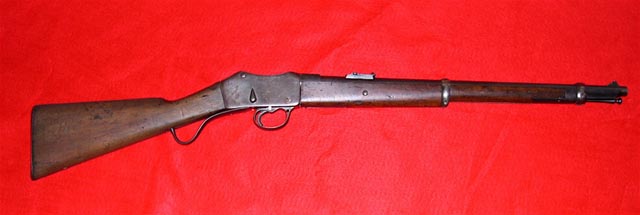 |
| Martini-Henry Carbine Mark I (Cav Carbine Mark I)MFGR- W.W. Greener, Birmingham I bought this rifle from Ken Chaffer in 1998. I think I paid about $400 for it. My guess is that it’s a military Martini that was refurbished and sold to the Western Australian Gov’t by Greener. Action has been polished down, and stripped of any markings. “W.W. Greener Maker Birmingham” is stamped on the opposite side of the action body. There are proof and war department markings on the weapon. Buttstock is marked “W.A. 669”. This is the rifle seen on the front page of my website, www.martinihenry.com, and also on my business cards. Also hangs on the wall in my office. Good little shooter too. |
 |
| Martini-Enfield Mark IMFGR- BSA & M Co, 1885 CONV- RSAF Enfield, 1896 One of my favorite rifles. Don’t ask me why, because it’s certainly not my best, as far as condition, accuracy or value. I just like this one. Blank stock disc. Action body bears “S.A.” markings. This is another one I got from Ken Chaffer. I don’t think I’ve ever shot this one. |
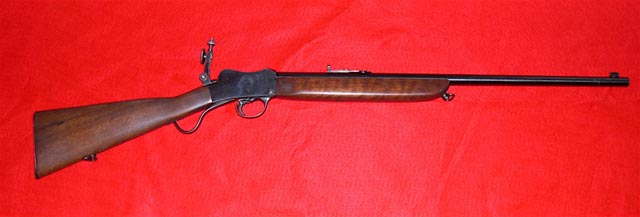 |
| Sportco-Martini, .22 CalThis little cherub wins the “Most Accurate” prize. I bought this rifle from my amigo, the forum’s very own “Hitch”, a short time ago. I first met her at the So-Cal Martini Shoot about a year ago. Hitch made his first mistake, and let me hold her. Then he made his second mistake and let me shoot her. I was fascinated that I could repeatedly hit a 2 Liter soda bottle out at 300 yards with this little hunny. Through bribery, coercion, and Jedi-Mind-Tricks, I convinced Hitch to sell her to me…his third mistake. The BSA peep sight makes hitting your target almost a sure-thing. Awesome little rifle. Soda cans and rodents beware! |
 |
| Martini-Henry Mark IVMFGR- RSAF Enfield, 1887 The ugly duckling. Actually, the rifle would look really nice, if there wasn’t a huge sliver of wood missing on the forend, just behind the rear sight. Mechanicals are all good, bore is very good. I impulsively bought this rifle from somebody who solicited me via my website. It’s in a little rougher condition than I nomrally go for (I don’t like fixer-upper rifles). If anybody’s looking for a good shooter, I’d probably be willing to sell or trade this rifle. Shoot me an email. |
 |
| Martini-Enfield Artillery Carbine Mark I (MEAC I)MFGR- RSAF Enfield, 1882 CONV- HRB Co, 1897 Another Ken Chaffer Rifle. Nice example, wood is great, but metal probably only retains about 40% of original finish. Excellent bore, and internals. Looks really mean with a bayonet attached. Stock disc marked with an issue date, “2 1900”. |
 |
| Martini-Enfield Mark IMFGR- RSAF Enfield, 1881 CONV- RSAF Enfield, 1896 My first large-frame Martini-Henry, thanks Ken Chaffer! Stock disc is marked “N.S.W. 1899, 1011”. Bore is good, but there are a couple pitted areas. Bore was lapped by Birmingham Repair facility in 1890. Shoots 5″ groups at 100 yards. Mint handguard with no cracks! Embellished with an IMA repro buff leather sling and a reproduction Gary Baron clearing rod. Another one where the picture does it no justice. |
 |
| Trade Pattern Martini-Enfield CarbineGot this one from Jansa some time back. They told me it was used as a guard’s gun in a prison on Tasmania. Buttstock is marked “T.G. 1787”. No military markings at all on this weapon. Commercial proofmarks. |
 |
| Greener GP Gun Take-Down ShotgunGarden-variety Greener GP gun. Wood does match, contrary to what the picture shows (stupid digital camera flash). Have shot clay pigeons with this gun, it has an extremely tight pattern. The auto-activated toggle-safety is dreadfully annoying, and has caused me to miss a number of shots. Very fun gun. People at the trap club don’t know what to think of it. |
 |
| Greener GP Gun Take-Down ShotgunAn older, but nicer example of the GP gun. This rifle differs from the one pictured above, only in that there is a letter “S” for “Safety” on the wrist of the buttstock. The checkering on the butt has been moved rearward approximately 3/16″ to accomodate this “S”. The newer gun doesn’t have this. |
 |
| Bonehill .22 Caliber ConversionMFGR- RSAF Enfield, 1888 (M-H Mark IV) CONV- Christopher George Bonehill, Birmingham, date unknown Here’s a unique one. A .22 Caliber Mark IV with a short lever! Has bore erosion, and thus, a buggered up extractor. Common issue on SMRC conversion rifles. Butt has a unit marking, “Volunteers, East India Railway Rifles”. Had 3 holes drilled into the nocksform, possibly for some sighting device. Had a gunsmith fill these up and brown them to match. Will possibly have this converted to a larger caliber, or sleeved for .22. If only the old girl could talk. UPDATE!!! 29 JUN 05 My friend Douglas back in Virginia installed a new liner in this rifle. Shoots and extracts like a dream now. Thanks Douglas! |
 |
| Bonehill .22 Caliber ConversionMFGR- BSA & M Co, 1889 (Indian Contract M-H Mark II) CONV- Christopher George Bonehill, Birmingham, date unknown Another SMRC conversion rifle. Underside of forend marked in big letter “DP”. I had Douglas install a liner in this one too, and she’s quite a tack-driver now. |
 |
| Trade Pattern Martini-Enfield “Short-Rifle”This is another acquisition from my amigo, Hitch. Although, on this one, I think he got the better of me 🙂 Great wood, great rifling, but the breechblock and striker is ultra-buggered. Anybody have a .303 breechblock and/or striker they’re looking to get rid of??? |
 |
| Citadel Martini-Enfield CarbineMFGR- Citadel Arsenal, 1905 The action body on this one has been ground down, but the original HRB Cypher from the 1880’s is partially visible still. Poor fit and finish in general…common on Citadels. Best .303 bore of any of my Martinis! Shoots nice groups at 100 yards. Arabic markings on the disc for the number 010. Anybody want a good shooter? I’m willing to sell/trade this one. |
 |
| Martini-Henry Mark IVMFGR- RSAF Enfield, 1887 Former Enfield-Martini Mark I. Faint cartouche on the buttstock. Can only identify the letter “W” in it, nothing else. Has “DIK” markings, which I take to mean “Pakistan District Police”. Good shooter with a nice bore. Got this one from Jean Plamondon. |
 |
| Martini-Henry Mark IIIMFGR- RSAF Enfield, 1879 I got this rifle from John Denner a few years ago. An excellent rifle with “Dominion of Canada” and “5th British Colombia Rifles” markings. Rack number 503. |
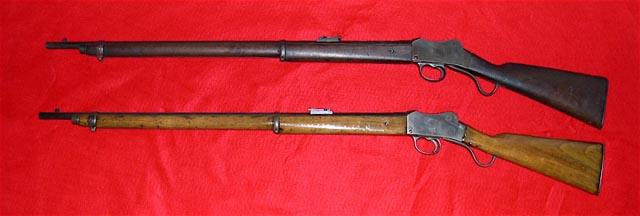 |
| Francotte CadetsThe lower rifle is the first Martini yours truly ever owned. Have fired this rifle with cartridges made from reformed .22 Hornet cases. It hangs on the wall of my office. Victorian Government markings, number 1015. Tragically, I sanded and tru-oiled this rifle’s wood. Shame on me, but I learned my lesson. The upper rifle is similar, number 507. The rear sight on the lower one faces forward, but the upper rifle’s rear sight faces rearward! Both examples have BSA 1907 dated barrels. |
 |
| Martini-Henry Mark IIIMFGR- RSAF Enfield, 1879 A really fine Mark III. I think this one came from Jean Plamondon up in Canada. |
 |
| Martini-Henry Mark II MFGR- RSAF Enfield This is my IMA purchase. I heard stories of some real jewels coming from the cache, so I figured I’d give it a shot. I received it, along with an autographed copy of Christian Cranmer’s book “Treasure is Where You Find It”. Upon arrival, I noticed the forend was very loose near the action body. Disassembly revealed the block on the underside of the barrel for securing the forend was snapped off. It had been arc-welded once! Fortunately, the weld was done by a moron, and it didn’t have very good penetration of the barrel (whew!). I ground both surfaces flat, and silver-soldered the block back into place. Good as new. |
 |
| Martini-Henry Mark III MFGR- N.A & A Co. Currently, the finest rifle in my collection. This is a National Arms & Ammuntion Company Mark III. I purchsed this rifle from a reader of the website from Canada. I don’t plan on shooting this particular rifle, because it’s simply in marvelous condtion. Somebody really cared for this rifle. I have plenty of shooters. |
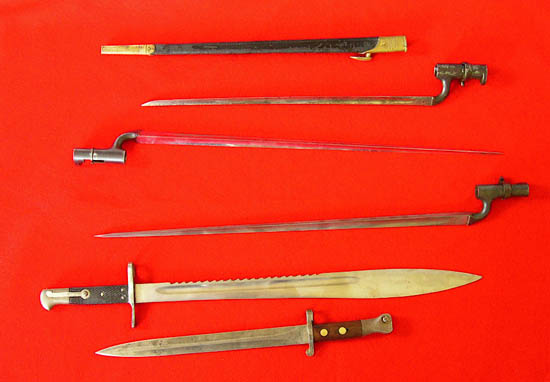 |
The pointy things.From the top…
|
|
|
|
Group photo…squeeze together now. Closer, closer….CLICK!
|
Bayou Renaissance Man
A lot of handgun owners are apparently moving to 9mm. Parabellum pistols, following recent improvements in ammunition technology that have allegedly improved the performance of the smaller cartridge until it rivals that of larger rounds.
I’ve noticed many more advertisements for .40 S&W handguns on, for example, the local Armslist than I have for 9mm. pistols, and anecdotal evidence from other bloggers and shooters also persuades me that the 9mm. is finding renewed popularity.
I’m not surprised by this; I often carry a 9mm. pistol (for reasons explained here), and I know many other experienced, competent shooters who’ve made the same decision.
Nevertheless, the number of quality .40 S&W pistols currently offered for sale means that their prices have become depressed.
I’d say that at present, in my area, a pistol chambered for 9mm. Parabellum will sell faster and fetch 10%-20% more than an almost identical model from the same manufacturer in .40 S&W or 357 SIG.
Apart from the lower price you’ll get for it, there are three reasons why I suggest you hold on to your larger-caliber pistol, rather than sell it.
- For best-selling pistols like the Glock or Smith & Wesson M&P series, aftermarket caliber conversion barrels are available. (See, for example – in alphabetical order – the products of Bar-Sto, KKM Precision, Lone Wolf Distributors and Storm Lake. I currently use conversion barrels from KKM and Lone Wolf; the latter are the lowest cost, in my experience, and their quality is quite acceptable.) They convert larger-caliber pistols to shoot smaller cartridges (e.g. a .40 S&W or 357 SIG can shoot 9mm, or a 10mm. can shoot .40 S&W). They can typically be had for $100-$200 – a lot cheaper than the price of a new pistol – and most have proven pretty reliable in service. When fed with the right magazines for the cartridge in question, and after a break-in period of 500 rounds or so (an essential precaution, IMHO), I’ve found mine every bit as reliable as factory 9mm. handguns. I wouldn’t hesitate to trust my life to them if necessary.
- If another ‘ammunition drought’ strikes, expect the most popular cartridges to be the hardest to find. During the most recent ammo drought, one couldn’t find quality defensive 9mm. hollowpoints for love or money in some areas. (Fortunately I had a decent stash of the good stuff, so that wasn’t too much of a problem for me; but other shooters of my acquaintance were hurting badly.) However, even at the worst times one could always find quality defensive ammunition in larger and/or less popular and/or more expensive calibers on at least some gunshops’ shelves. If you find yourself running low on stocks in one caliber, and your pistol can accommodate another caliber by using a different barrel, you won’t be in danger of running dry.
- The same improvements in ammo technology that have upgraded the 9mm. Parabellum cartridge have also upgraded other favorite defensive loads. I still have several .40 S&W and .45 ACP pistols in my gun safe, and I’ll carry any of them for defensive purposes without hesitation. A great many law enforcement officers and agencies still entrust their safety to those rounds. I trust their performance, and the .40 S&W sacrifices very little to the 9mm. in terms of magazine capacity – perhaps ten per cent at most in a typical handgun. Why get rid of a good thing?
In fact, when I see a bargain-priced .40 S&W handgun for sale, and I know I can get a reasonably-priced 9mm. barrel for it, I tend to make an offer and see if I get lucky. Right now is an excellent time to buy handguns like that.
Peter
